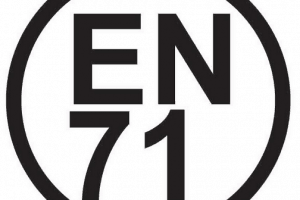 The EN 71 standard for the safety of toys made or imported into the European Union specifies the tests to perform to comply with the European directives. While large corporations employ specialized teams to check if their product design complies with EN 71, smaller importers normally rely on third party companies. EN 71 standard is divided in 13 parts, this article presents and explains parts 1, 2 and 3.
The EN 71 standard for the safety of toys made or imported into the European Union specifies the tests to perform to comply with the European directives. While large corporations employ specialized teams to check if their product design complies with EN 71, smaller importers normally rely on third party companies. EN 71 standard is divided in 13 parts, this article presents and explains parts 1, 2 and 3.
EN 71 standard part 1: mechanical and physical properties
The first part of EN 71 regulates mechanical and physical properties of toys. The section contains over 30 important tests. For example, minimum sizes for very small toys are defined - so that babies cannot swallow them. During the design process, buyers and suppliers should be aware of the standard.
A good third party inspection company will also detect non-conformities during a product inspection. This ensures that design changes by the manufacturer are detected and shipment of unacceptable goods is prevented.
EN 71 standard part 2: flammability
Most materials used by manufacturers to produce toys will burn if exposed to an appropriate ignition source. To reduce the risks of burn injuries associated with children being in contact with certain toys, different testing methods have been defined to identify a limited rate of spread of flame or maximum ‘after flame time’ to give time to the child to drop the toy or take distance from it before serious injury occurs.
EN 71 standard part 3: migration of certain chemicals
The EN 71 standard part 3 is focusing on studying the chemicals contained in the toy and the levels in which they are present. Since July 2013, the regulation has extended the metal restrictions and application scope to a wider range of toys. There are 19 metals restricted now. The limitation varies depending if it is
- Category I - in dry, brittle, powder-like or pliable toy material:
Solid materials which may leave residues on the hands. - Category II - in liquid or sticky toy material:
Fluid or viscous materials which can be ingested or have skin contact. - Category III - in scraped-off toy material:
Solid materials which can be ingested by biting, tooth scraping, sucking or licking.
As for all standards, only "notified bodies" can issue valid certificates.
Guidelines on EN 71 part 1-2-3 and so on
There are many useful online documents and websites to better design products and help to focus on the important points, such as:
- https://www.gov.uk/toy-manufacturers-and-their-responsibilities
- http://www.toysadvice.co.uk/toy-safety-standards-uk.html
- http://www.childsafetyeurope.org/
- http://www.complianceandrisks.com
And you: how do you manage the product design and quality control with regards to EN 71 standard part 1-2-3?






